- Shop Now
- Burncoose Specialities
- This Month
- Offers & Promotions
- RHS Chelsea Flower Show 2024
- 40 years at Burncoose
- Engage With Us
- Information, Help & Advice
- About Us & Our Services
- Terms & Conditions
- Log In / Register
Chapters
- How to plant a tree - Video Tip
- How to plant a tree
- Ties - Video Tip
- Restaking fallen young trees - Video Tip
- Fallen old tree - Video Tip
- Clearing up fallen beech tree - Video Tip
- Spring pruning - Video Tip
- Removing side shoots - Video Tip
- Pruning and Shaping Magnolia - Video Tip
- Deer protection - Video Tip
- Weed Spraying - Video Tip
- Removing Ivy - Video Tip
- Removing wire protection - Video Tip
- Tree Survey - Video Tip
- Crown uplift - Video Tip
- Removing shoots below graft - Video Tip
- Removing peeling bark - Video Tip
- Maintaining variegation - Video Tip
- Plants
Trees - Care Guide
How to plant a tree - Video Tip
How to plant a tree
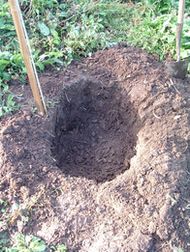
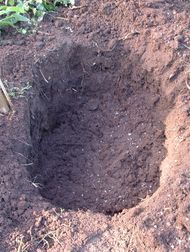

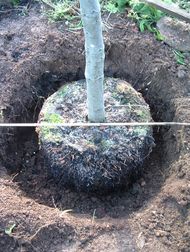
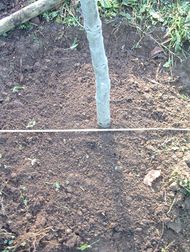

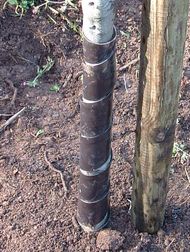
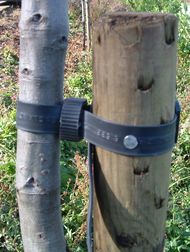
9. Staking can be carried out in different ways in different locations according to the size of the plant.
The windier and more exposed the location the more essential it is to stake properly. Stakes should always be inserted on the side of the plant facing the prevailing wind so that the plant pulls away from the stake in gales rather than rubbing against it.
All stakes and ties should be checked at least once a year so the expandable plastic ties can be loosened or removed altogether as the trunk of the tree grows and expands. Sometimes the expandable plastic ties move on the plant and cause the tree to rub against the stake. This can cause long term damage and again needs regular checking.


10. Mulching around your new tree is probably a good idea in formal planting schemes because it will inhibit weed growth but is not always essential in a woodland setting. Careful spraying with weedkiller around the base of a tree in April or May can achieve the same effect which is to ensure that in dry periods rainfall gets down to the roots of the tree rather than being absorbed by grass and surrounding vegetation. Never use coniferous bark mulch for this purpose as it can be toxic to ericaceous plants and again never cover the graft with bark mulch as this is just as likely to kill the plant as covering it with soil.
11. Plants and trees which have leaves which are attractive to slugs and snails (eg especially Magnolias) should be protected in late Spring (April/May) as the new growth first emerges.
12. Always prune out any growth which appears from below the graft on the rootstock. If the rootstock grabs the energy from the grafted part of the plant it will become starved and die.
13. In periods of drought or dry weather in the first 2 or 3 years after planting takes place, watering two or more times a week will be helpful to avoid casualties on stunted new growth. Once watering commences it should carry on until the weather changes.
14. A dose of granular fertiliser at the start of each subsequent growing season in March or April will encourage the plant to grow more robustly.
15. The commonest ways of killing newly planted trees and shrubs are:-
a) Breaking the rootball during planting
b) Planting too deeply
c) Covering the graft in soil
d) Leaving the plant exposed to deer or rabbits
e) Inadequate watering in dry spells - especially where weed growth is not controlled
f) Poor and inadequate staking combined with a lack of heeling in after major storms.
Ties - Video Tip
Checking Ties
Tie Damage
Removing ties & stakes
Restaking fallen young trees - Video Tip
Fallen old tree - Video Tip
Clearing up fallen beech tree - Video Tip
Spring pruning - Video Tip
Removing side shoots - Video Tip
Pruning and Shaping Magnolia - Video Tip
Deer protection - Video Tip
Weed Spraying - Video Tip
Short version
Longer version with before and after footage






